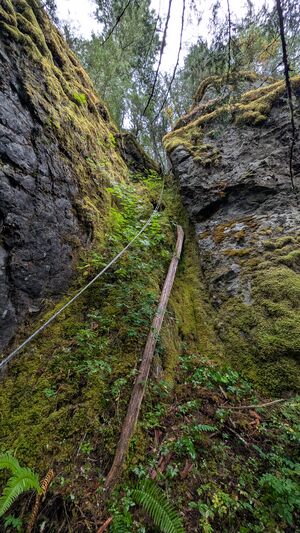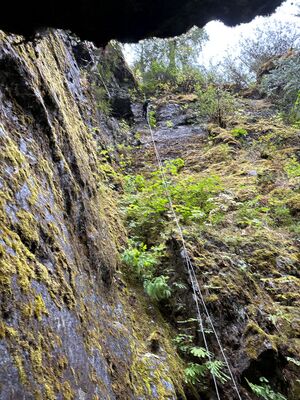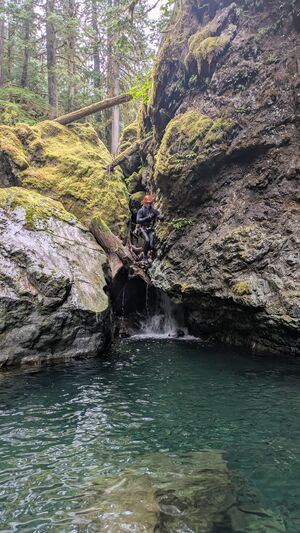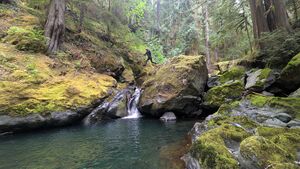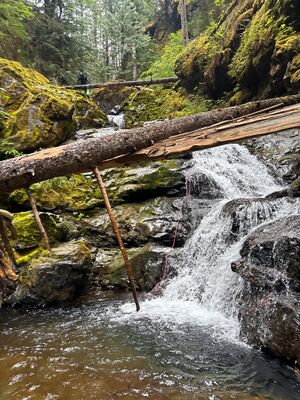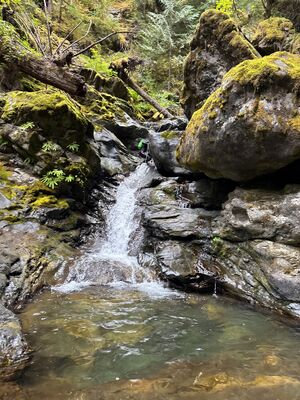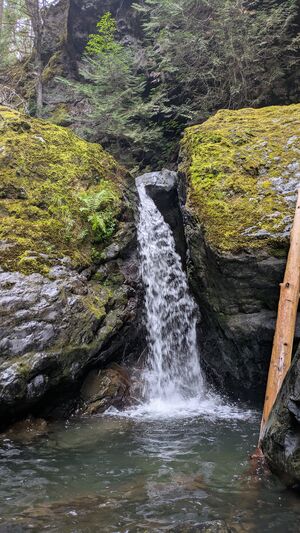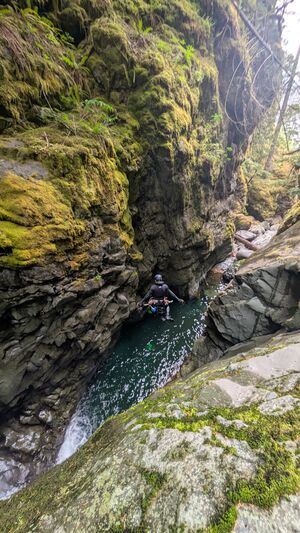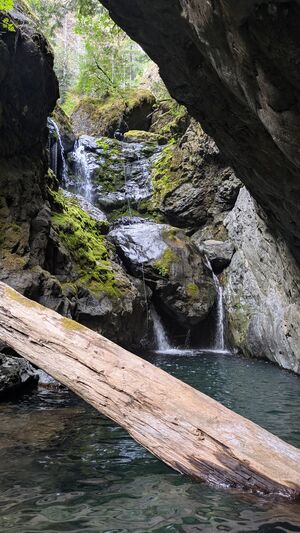Cabin Creek (Olympics)
| Rating: | |||||||||||||||||||||||||||||||
|---|---|---|---|---|---|---|---|---|---|---|---|---|---|---|---|---|---|---|---|---|---|---|---|---|---|---|---|---|---|---|---|
| | Raps:4-7 + 4 jumps, max ↨200ft
Red Tape:No permit required Shuttle:Optional 3mi Vehicle:High Clearance Rock type:Basalt | ||||||||||||||||||||||||||||||
| Start: | |||||||||||||||||||||||||||||||
| Parking: | |||||||||||||||||||||||||||||||
| Shuttle: | |||||||||||||||||||||||||||||||
| Condition Reports: | 15 Oct 2025
"Great day to get a last run in on this canyon. Put in webbing on trees for the entrance rappels. Jumps are all in and no issues. |
||||||||||||||||||||||||||||||
| Best season: | Jul-Sept
|
||||||||||||||||||||||||||||||
| Regions: | |||||||||||||||||||||||||||||||
Introduction[edit]
Cabin Creek has a sporting approach then mostly short easy rappels with a number that can be bypassed with fun jumps up to 60' in height.
Unlike other nearby canyons, Cabin Creek doesn't have large snow fields in its 6mi^2 catchment so it might be in earlier then July.
CAUTION: There is little chance to escape the canyon left due to 200' cliffs along most of the route. An escape to canyon right is possible with a bushwhack to the main road.
Approach[edit]
Park at the large camp on the side of the road and descend downhill towards the open cliffs. Traverse towards the canyon keeping the large cliffs on your left until you see the weakness in the cliffs below you. A 60m meter rope can be used to rappel this section which provides a safe location to pull rope.
Use one of the cedars below to make a 200' rappel down the cliff face to the canyon floor. Next party through should bring anchor material for the trees.
Descent[edit]
J1 - 15ft Jump or Dry Slide from DCC
J2 - 20ft Jump from DCC
S1 - 15ft low angle
R1 - 65ft from log DCC
R2 - 25ft from log in pool set back 20ft from feature. (45ft total)
R3 - 15ft from log DCC set back 25ft from feature (40ft total)
J3 - 8ft into 4ft pool
R4 or J4 - 35ft rappel set back 15ft to boulder or meat anchor (50ft total) or 30ft jump
R5 - 60ft rappel from very large cedar DCL or boulder DCL to base or 40ft to pool and jump (J5); This could also be jumped from the ledge above the pool with a large 60+ technical jump if you had the burning desire.
J5 - 20ft jump from rock DCC
R6 - 65ft from stump DCL
Exit[edit]
Follow the creek a short distance until the canyon opens up and make your way towards the gravel pit. There is a faint trail that comes from this area to the creek if you can find it. A road leads from the area to the locked gate.
Red tape[edit]
Beta sites[edit]
Trip reports and media[edit]
The first known descent of Cabin Creek was made by Austin Abseils, Frank Mayfield, Paige Hanson, Sean Szymanski on August 23rd, 2023.


